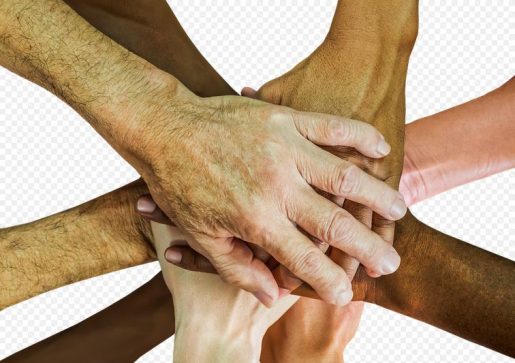How to survive and thrive: Labor and friendship among early humans
Editor’s note: This is the second post in a three-part series on friendship. See the first post.
Close, loving friendships evolved among early human hunter-gatherers to promote survival within gender-separated social environments. People with long-term friendships could more easily gain the resources and support needed to have a mate and raise their children to reproductive age.
In many ways, our ancient ancestors led the way into how we think about gender and societal norms and policies related to work, childcare and movement, as well as what constitutes work and non-work or free time.
In The Prehistory of Sex, archaeologist Timothy Taylor described how our ancient ancestors began attributing gender to clothing, activities, social roles, and social space at least two million years ago. Our early ancestors knew that people differed in anatomy and reproductive function, even if they did not understand biology.
Pregnancy, childbirth, nursing, and childcare became associated with women. These roles often restricted women’s movements, keeping them close to camp. Women took on additional roles, though not exclusively, that could be performed near camp, like gathering and preparing foods, weaving, repairing clothing, and tending to the sick.

Ancestral men had no reproductive restrictions on their movement and engaged in activities that took them away from camp, perhaps for long periods of time. They hunted large game, gathered difficult-to-reach foods like honey in tall trees or from stinging bees, traded with men from other communities, and defended the camp from animal predators and hostile groups.
A consequence of gendered division of labor was that men and women spent most of their day, or many days, in separate groups. Thus, I argue that survival required reliable same-gender partnerships.
Ultimately, close friends helped individuals acquire resources for survival, ensure support, and defend against aggressive others within and outside the group. Anthropologists generally note a division of labor and routine gender separation among contemporary hunter-gatherer societies, although where those divisions are drawn and the degree of separation varies across groups.
In many contemporary hunter-gatherer societies, boys at an early age leave the company of girls and women to spend much of their time with other boys and men learning to hunt, which requires many years of practice. At the same time, girls and women remain near camp engaged in domestic chores, caring for young children, gathering and preparing food, and sometimes hunting small game.
In the paper “Why do men hunt?,” anthropologists Michael Gurven and Kim Hill concluded that hunting skills and male alliances were associated with greater reproductive success in every hunter-gatherer society examined. Successful hunters had better mate choices than poor hunters or men who do not hunt. Further, women highly valued successful hunters as mates in part because hunting skill increased the likelihood of meat in the diet. Hunter-gatherer women’s average fertility is linked to the amount of meat in their diet.
Living in harsh environments, ancient human hunter-gatherers needed trusted, cooperative partnerships to survive, and cooperation did not come solely from relatives. Anthropologists have estimated that ancient hunter-gatherers lived in small groups of 20-100 people, representing several families who were unrelated to each other. Cooperative relationships with non-relatives were critical.
In a clever study of valued relationships, 200 individuals from hunter-gatherer camps on two continents wore a device to track their movements. Across continents and camps, men and women uniformly maintained close contact with one-to-four close friends and interacted with friends as frequently as with family.
Friendships pay off in shared resources. Field researchers have also observed that across hunter-gatherer societies people share food with relatives, neighbors, and cooperative partners or friends.
For our ancient ancestors, the evolutionary problem to solve was how to survive and acquire a reproductive mate and support a family and children who will have children of their own. Living mostly in a gender-segregated social space, a key solution for directly addressing survival was the formation of close same-gender friendships.
In the next and final post, I discuss the changing climate of friendship over time and how our present culture affects the form of our close friendships.
-By Michael R. Kauth, Ph.D., professor, Menninger Department of Psychiatry and Behavioral Sciences at Baylor College of Medicine



